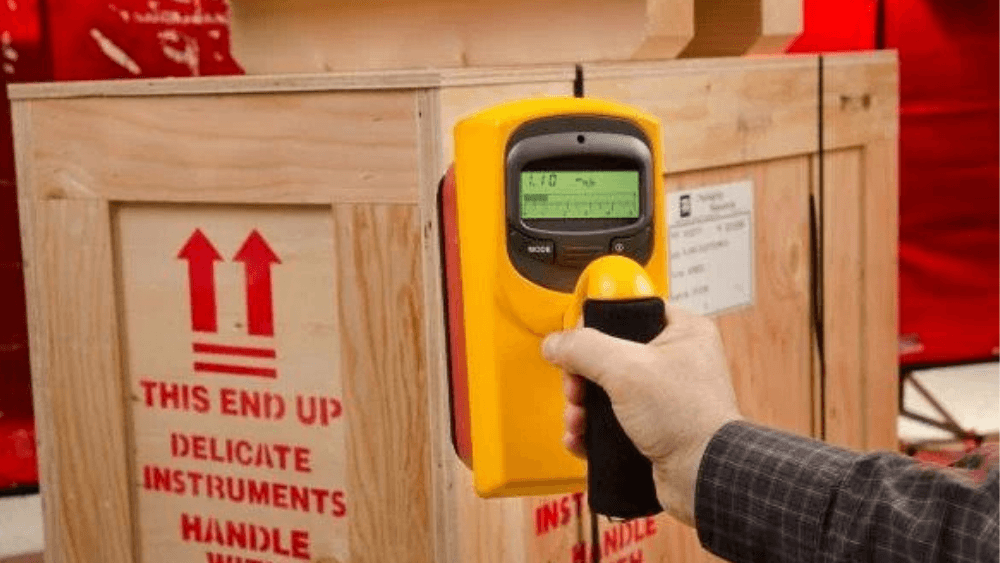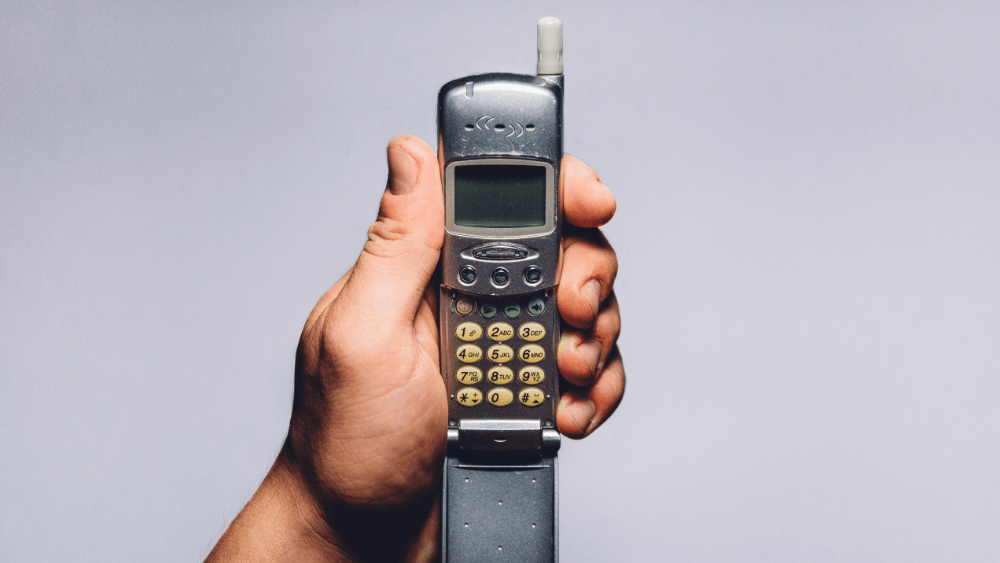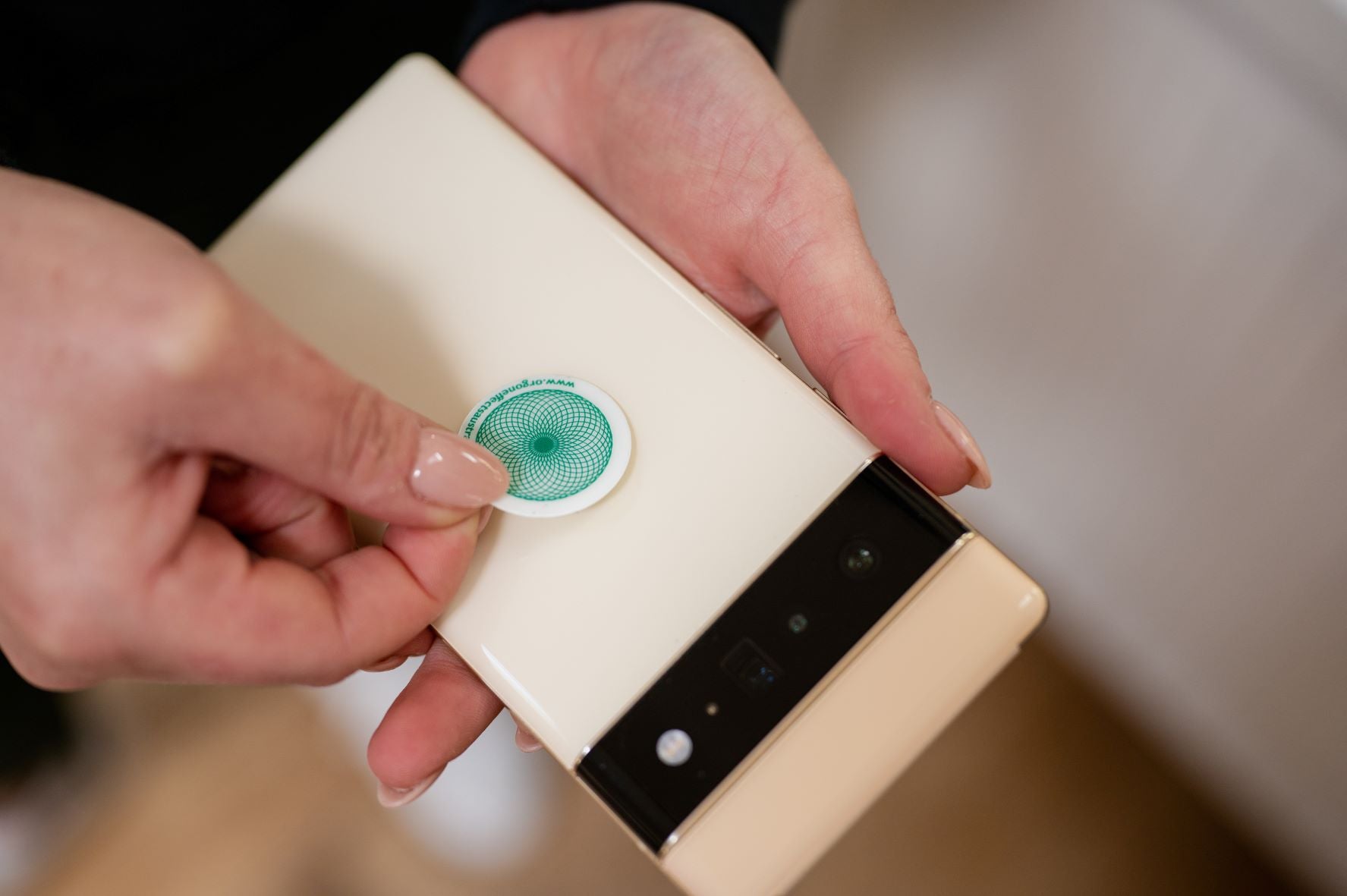Because most baby monitors give off high levels of radiofrequency (RF) radiation, it is important to know that baby monitors with low emissions are available. And the people most sensitive to radiofrequency radiation are our children, especially our babies.
This is perhaps one of the most important articles on this blog.
Several peer-reviewed scientific studies are linking radiofrequency radiation to things like cancer, male infertility, and DNA damage (especially in babies and fetuses). British physicist Barrie Trower says he has observed several cases where this radiation caused the death of infants in cribs. Even the World Health Organization classified radiofrequency radiation as a “possible carcinogen” in 2011.

And baby monitors aren’t just a subtle emitter of radiofrequency radiation. They are among the largest sources of this radiation in the average household. Unlike a cell phone that emits only at full power when receiving and making phone calls, baby monitors tend to emit at full power 24/7 as long as they are turned on. And what makes the situation worse is that most parents don’t fully realize this and place their baby monitors very close to the baby’s sleeping area.
Before proceeding with this article, let’s make an important suggestion. If after reading articles like the ones on this blog, you still decide to use a baby monitor, then you should choose one of the safer ones like the ones we reviewed below. There are also other items that you can use to protect your baby from both the baby monitor and other radiation-emitting devices in your home.
You can change the energy in your home and protect what matters most with our GeoClense EMF and Earth Radiation Harmonizer.

The Geoclense is a healthy, negative charge resonance field generator designed to balance the noxious, unhealthy positive charge resonance created by baby monitors and all forms of EMR, RF, Wi-Fi, Earth Radiation, and Bioplasmic Radiation.
Simply plug the Geoclense in and experience the difference in your home with EMF protection.
Do Baby Monitors Emit EMF Radiation?
Yes, almost all baby monitors emit some level of electromagnetic radiation. Most baby monitors use radio waves to maintain a connection between the monitor and the camera, much like a cell phone transmits data to a cell phone tower. These radio waves are a type of EMF radiation known as radiofrequency radiation. We will see in a moment why RF radiation can be dangerous. First and foremost, however, it is important to understand that not only do baby monitors emit RF radiation, which is likely the most harmful, but its electrical components also give off another form of EMF radiation known as magnetic field radiation. Most of the time, RF radiation isn’t that dangerous unless you’re really close to it, but it is important to know.

Most baby monitors use FHSS or DECT technologies, which use frequencies of 1.89 and 2.4 GHz to transmit information to the monitor. These radio waves give off the same type of EMF radiation as your microwave or Wi-Fi router and can be potentially very harmful depending on your child’s proximity and the power level. In fact, it is surprising to know that a baby monitor placed three feet from a baby’s bed emits as much radiation as a cell phone tower 50 meters away.

You see, because a baby monitor has to transmit data constantly from the camera (or microphone) to the monitor, they constantly send out radio waves, often up to 100 times per second. Almost any baby monitor you use is likely to emit at least some electromagnetic radiation in the form of magnetic field radiation and radio waves. However, we can reduce exposure significantly by purchasing low EMF baby monitors. Also, we can reduce exposure with simple steps like adjusting settings, gaining distance, and some other ideas that we will cover at the end of this article.
Now that we understand baby monitors emit EMF radiation, let’s talk about why this is important and why it could be dangerous for your little one.
Why are Baby Monitors so Bad?
According to the National Association for Children and Safe Technologies, the possible side effects of this exposure to electromagnetic radiation from baby monitors are:
- Lowered immune system
- Decreased quality of sleep
- Impacted brain development
- Effects on the reproductive system
- and more…

Children, especially infants, are remarkably more sensitive to the harmful effects of electromagnetic radiation because their bodies and brains are still in the developmental phase. In case you do not know this already, let’s talk about it in more detail.
Why are Children More Sensitive to Electromagnetic Radiation?
It is important to remember that children are not only smaller adults, but their entire physiological and biological makeup is quite different, particularly when they are very young. This makes them more sensitive to many things like electromagnetic radiation, pollution, and many more.

For instance, a 2003 study found that children have thinner bones and skulls. These thinner bones are less able to protect them from the transmission of electromagnetic radiation, allowing their brain to absorb up to twice the electromagnetic radiation emitted by things like Wi-Fi routers, cell phones, and even some baby monitors.
According to a 2011 study,
“when electrical properties are taken into account, the absorption from the head of a child can be more than double and the absorption from the bone marrow of the skull can be ten times that of adults.”
Furthermore, the brains of infants also have a completely different chemical composition, as they contain more ions and fluid that allow electromagnetic radiation to penetrate much deeper into the brain tissue. Also, children have smaller heads, which means that the brainstem is closer to their skull’s edges. This means that the radiation has to travel less distance literally, thus eliminating some of the protective concepts of the inverse square principle.
In fact, the Government Accountability Office (GAO) in 2012 published a report titled “Exposure and Testing Requirements for Cell Phones Should Be Re-evaluated.” The report was an official request for the FCC (Federal Communications Commission) to reevaluate its regulatory requirements, noting in particular:

“The FCC’s RF energy exposure limit may not reflect the latest research and testing requirements may not determine maximum exposure in all possible use cases.”
At the time of this writing, these regulations still haven’t changed since their introduction in 1996. It is not just these things, but also the fact that children cannot easily control the radiation exposure around them. Usually, the parents decide. In fact, a 2008 study titled “Prenatal and Postnatal Exposure” discovered that out of 13,000 children surveyed, children whose mothers used their cell phones more frequently were more likely to have various behavioral problems.
Another 2002 study found that excessive cell phone usage could potentially be linked to an increased risk of birth defects or miscarriage.
Safest Low EMF Baby Monitors
Here are some of our recommended low EMF baby monitors available today, ranging from analog baby monitors to hardwired digital baby monitors or baby monitors with audio capabilities. This list is not exhaustive and model specifications are subject to change. So check the listings and if necessary contact the manufacturer.
- Safety 1st Crystal Clear Audio Monitor
This affordable analog audio-only baby monitor is among the best options that emit low EMF. It operates at only 49 MHz but still has a range of around 600 feet. Of course, you will get a little static with this one; the sound is not exactly “crystal clear” and there is a good chance that other devices near you are working on the same frequency.


However, if it works for your setup, the Safety 1st Crystal Clear Baby Monitor is the best option to alert you when your baby needs attention. This plug-in baby monitor does not run on batteries, so make sure it works where you want it to.
- First Years Crisp and Clear Audio Monitor
Another analog option is the First Years Crisp and Clear Audio Monitor, and it offers only audio (no video). The transmitter and receiver can be battery-operated or plugged in, and you don’t have to worry about turning off Bluetooth or Wi-Fi, although depending on where you live there may be interference.
The range of this device is around 600 feet, so it’s pretty standard and everything you really need in most homes. A cool feature of this unit is that it has a sound-sensitive light indicator, so you can see how loud the sound is with just a glance (useful when watching TV, listening to a podcast, or vacuuming). The First Years Crisp and Clear Audio Monitor also have out-of-range alarms.
- TimeFlys Digital Audio Baby Monitor
The TimeFlys Audio Baby Monitor is another great option for minimizing EMF as it boasts a “zero-emission” night mode when everything is peaceful and calm and only activates when the sound is activated (50 decibels when it operates at 2.4 GHz in FHSS). To activate it, quickly press the OFF/ON button on the parental unit 3 times and the orange LED will light up. This unit has a two-way audio system (with lullaby option) and a temperature display with an audible alarm if the ambient temperature falls below or exceeds a certain range.

Also, there is a night light that can be remotely controlled or from any device and a warning when the battery is low or out of range. This monitor is pluggable for the baby unit and pluggable or battery-operated for the parent unit. The built-in rechargeable lithium-ion battery can operate for about 15 hours if only charged for a few hours. The parent unit has a belt clip for added convenience when walking around the house or in the garden, and the vibrating alarm is great for when you are doing noisy chores.
- Phillips Avent DECT Video Baby Monitor
The Phillips Avent DECT Baby Monitor is a top choice when you want video and audio, but don’t need video all the time. It’s also one of the most affordable baby monitors and has a range of only 330 feet, which is enough for most families and helps keep emissions down overall. Unlike many digital baby monitors, this unit uses DECT technology, meaning that interference from other devices is much less likely and emissions are generally lower than a 2.5 GHz unit (DECT uses 1880 to 1900 MHz). There is a smart ECO mode that will help you save energy and, more importantly, significantly reduce your EMF exposure.

The Phillips Avent DECT Video Baby Monitor has 5 sound-activated LED lights so that you can see the noise level at a glance, it has a pleasant night light, and the parental unit can be connected to the mains or battery-operated.
- D-Link Indoor Full HD Wi-Fi Security Camera
The D-Link Indoor Security Camera is a great hardwired choice for a baby monitor, offering zoom, pan, tilt, motion detection, night vision, and 2-way audio. It can be used over Wi-Fi, but the best low EMF option is to connect the camera to an Ethernet port and turn Wi-Fi off completely.
The device also offers SD and cloud recording on demand and is compatible with Google Assist and Alexa. It would make a great indoor security camera after you are done using it as a baby monitor. The zoom, pan, and zoom is also a great feature, as you can do it “manually” or use saved angles, which is especially useful when you are looking at multiple babies in the same room. The camera transmits alerts as push notifications to your cell phone when it detects sound or motion.
How Do I Reduce EMF from my Baby Monitor?
Unless you plan to lead-line every item in your home, it is highly unlikely that you will be able to escape all the GHz and MHz of electromagnetic frequencies in your home from every device that is turned on. If you did, you would have a really bad Wi-Fi signal. The best thing to do to protect yourself and your child is to limit the exposure to whatever radio wave you are regularly exposed to daily.

Don’t use analog or wireless baby monitors for longer than necessary. Keep your child away from electronic devices and take more walks so they don’t get stuck in the house all the time. The same goes for your cell phone. You don’t need to take it with you everywhere. It’s good to have it with you, but it’s worth turning it off now and then and enjoying a break in nature with your little one to recharge. Finding devices that emit less radiation, while also retaining similar functionality is also a step you can take if you are desirous of going the extra mile, especially with baby gear.
A low EMF baby monitor doesn’t seem to make much of a difference, but when it is so close to a growing baby, it can cause problems. Also, it is better not to take any risk with the health of your child – safety first. We highly recommend investing in EMF protection products to protect you and the ones that matter to you. You can change the energy in your home and protect what matters most with our GeoClense EMF and Earth Radiation Harmonizer.

The Geoclense is a healthy, negative charge resonance field generator designed to balance the noxious, unhealthy positive charge resonance created by baby monitors and all forms of EMR, RF, Wi-Fi, Earth Radiation, and Bioplasmic Radiation.
Final Thoughts on Low EMF Baby Monitors
Baby monitors are among the most expensive nursery devices, so you need to think twice before purchasing one. If you live in a small house, you may not even need a baby monitor. And even in larger households, if you are in your baby’s room most of the time, you probably don’t need a monitor with anything more than a simple camera and microphone.

If you opt for a more sophisticated internet-enabled baby monitor, make sure you have performed automatic firmware updates to keep the monitor as secure as possible (and don’t forget to have a secure Wi-Fi password as well). And only turn on your monitor when absolutely necessary. If you have an eco mode, turn it on as this will save energy and can reduce electromagnetic fields to a minimum. In general, for a baby monitor, we recommend using only one when you really need it and then choosing an analog baby monitor or a networked/hardwired digital monitor.






